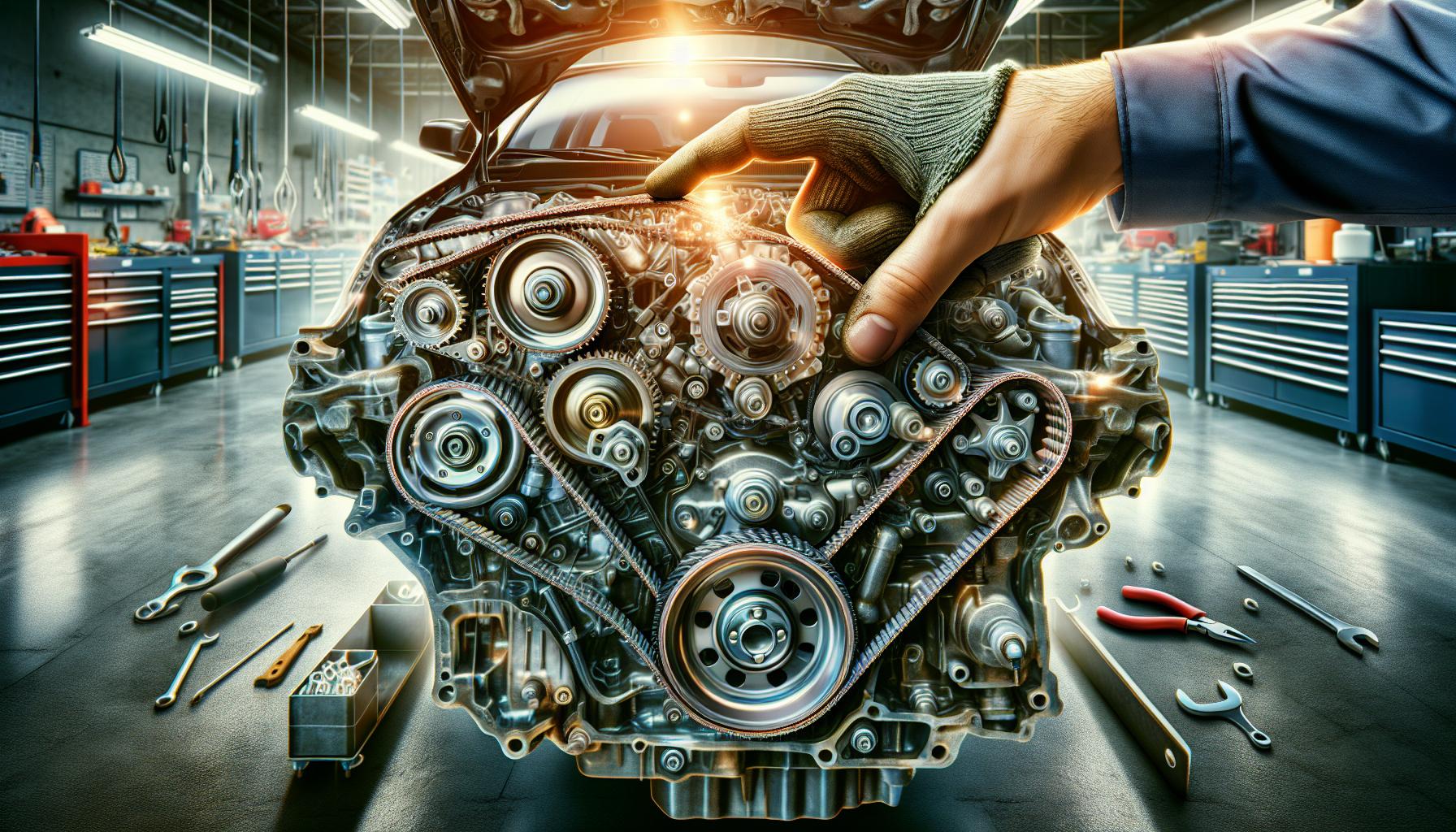When it comes to maintaining a Honda Accord, understanding its engine components is crucial for longevity and performance. One of the most debated topics among car enthusiasts and owners is whether the Accord uses a timing belt or a timing chain. This distinction can significantly impact maintenance schedules and potential repair costs.
Timing belts and chains serve the same purpose: keeping the engine’s camshaft and crankshaft in sync. However, they differ in durability and replacement frequency. Knowing which one your Accord has can help you plan for maintenance and avoid costly surprises down the road. Let’s dive into the specifics to clarify this important aspect of your Honda Accord.
Does Honda Accord have Timing Belt or Chain
Honda Accord, a midsize sedan, features a reputation for reliability and performance. This vehicle combines advanced engineering with comfort and technology, appealing to a wide range of drivers. Engine components significantly impact the Accord’s performance, making it essential to understand their roles, particularly the timing system.
The timing system, which includes either a timing belt or chain, plays a critical role in synchronizing the camshaft and crankshaft. The Accord’s engine production varies by year, so it’s important to verify the specific model. The majority of Honda Accord models utilize a timing belt, which generally requires replacement every 60,000 to 100,000 miles, depending on the engine configuration.
Certain models, particularly those produced from 2018 onwards, feature a timing chain. Timing chains typically last longer than belts and often do not require regular replacement, contributing to lower maintenance costs. When considering maintenance routines, understanding each model’s specifications helps owners plan better and mitigate unexpected expenses.
Timing Belt vs. Timing Chain

Timing belts and timing chains play crucial roles in synchronizing a Honda Accord’s engine components. Understanding their differences impacts maintenance decisions and costs.
Key Differences
- Material: Timing belts are typically made from rubber, while timing chains consist of metal links.
- Replacement Frequency: Timing belts require replacement approximately every 60,000 to 100,000 miles, whereas timing chains often last the lifetime of the engine without needing replacement.
- Cost: Timing belts incur higher replacement costs due to labor and parts, while timing chains, being more durable, generally result in lower long-term expenses.
- Performance and Noise: Timing chains usually operate more quietly and efficiently compared to timing belts, which may produce more noise as they wear.
Advantages and Disadvantages
- Advantages:
- Generally lighter and quieter than chains.
- Lower initial manufacturing cost, contributing to a vehicle’s affordability.
- Disadvantages:
- Requires regular replacement intervals, leading to potential costly maintenance.
- Prone to wear and tear over time, risking severe engine damage if it breaks.
- Advantages:
- Designed for longevity, often outlasting the vehicle’s typical lifecycle.
- Typically needs no regular maintenance, which reduces potential repair costs.
- Disadvantages:
- More expensive to manufacture and initially increase vehicle costs.
- Can be associated with timing chain tensioner or guide failure, which may involve significant repair efforts.
Timing System in Honda Accord
The timing system in the Honda Accord plays a crucial role in engine performance and longevity. Different engine models utilize either a timing belt or a timing chain, impacting maintenance practices and costs.
Engine Models and Their Timing Systems
Various Honda Accord engine models incorporate different timing systems. Most models, particularly those produced before 2018, use a timing belt, designed to provide precise synchronization between the camshaft and crankshaft. Models produced from 2018 onwards feature a timing chain, which offers enhanced durability and longer service life. Each engine’s configuration necessitates specific maintenance considerations, with timing belts typically requiring replacement, while timing chains often do not.
Replacement Intervals
Replacement intervals vary significantly between timing belts and timing chains. Timing belts usually require replacement every 60,000 to 100,000 miles to prevent potential engine damage. In contrast, timing chains are engineered for longevity, often lasting the engine’s lifetime without the need for replacement. Regular inspection of both components remains advisable to ensure optimal performance and address any wear issues promptly.
Common Issues with Timing Belts and Chains
Understanding potential issues with timing belts and chains is crucial for maintaining engine performance in a Honda Accord. Both components experience distinct wear patterns and problems that can impact the vehicle.
Timing Belt Wear and Failure
Timing belts can deteriorate over time, leading to several issues. Common signs of wear include:
- Cracks and Fraying: Visible cracks or frayed edges indicate the belt’s declining condition.
- Glazing: A shiny surface occurs from excessive heat, reducing grip.
- Slipping or Misalignment: Slipping can cause inaccurate timing, affecting engine function.
If not replaced, a worn timing belt may eventually snap, causing severe engine damage. Regular inspections every 60,000 to 100,000 miles can prevent unexpected failures.
Timing Chain Problems
Timing chains, while more durable, also face specific problems:
- Stretching: Over time, chains can stretch, leading to timing issues.
- Tensioner Failure: A malfunctioning tensioner may not maintain correct tension, increasing the risk of slippage.
- Noise: Unusual rattling sounds from the engine can indicate chain wear or insufficient lubrication.
Although timing chains typically last longer than belts, they still require inspection. Addressing these issues promptly helps ensure optimal engine performance and longevity.
Understanding whether a Honda Accord has a timing belt or chain is essential for effective vehicle maintenance. Most models prior to 2018 utilize a timing belt that requires regular replacement. In contrast, newer models feature a timing chain designed for longevity and reduced maintenance costs.
By knowing the specific engine configuration, owners can better plan for maintenance and avoid unexpected expenses. Regular inspections of both components are crucial for ensuring optimal performance. Recognizing signs of wear can help prevent severe engine damage. Staying informed about these differences empowers Honda Accord owners to make knowledgeable decisions regarding their vehicle’s upkeep.
